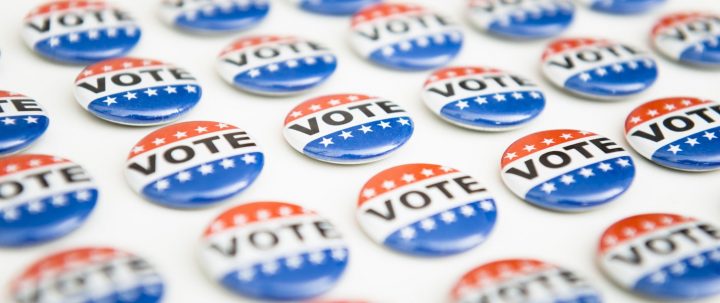Former Speaker of the House Tip O’Neill was fond of telling anyone who would listen, (particularly his many biographers) that the foundational election campaign lesson in his long and successful political career was simple – ask everyone.
O’Neill told the story of a close neighbor who scolded him just before his first election. “You didn’t ask me for my vote,” she said. The story seemed to change based on the telling – in some versions the long-time family friend didn’t vote for O’Neill at all, because he forgot to ask.
Whatever the precise truth – the lesson was not lost on the future Speaker. He rose to power and wielded it deftly, because he was not afraid to ask for support.
While successful politicians in the O’Neill mold remember this crucial lesson, it is all too often lost on the architects of modern campaigns – and sometimes for seemingly good reasons.
The widespread use of ever more sophisticated voter files now allow political consultants to predict with increasing certainty who is likely to vote. Faced with tight budgets, an entire generation of consultants has learned to “purge” unlikely voters from their targeting so more time and effort can be directed to those voters most likely to cast ballots. The growing sophistication of predictive models and algorithms has only amplified the ability of consultants to target those most likely to vote and leave out everyone else.
 In a midterm election, like the contests coming up in November, this means millions of “occasional voters” will not be targeted for communications through direct mail, digital media, targetable pre-roll video and other addressable media. Nearly 40 million Americans who cast a ballot in the presidential election in 2016 are considered unlikely to vote in the midterm elections, and beyond, there are nearly 20 million Americans who are eligible to vote but are not yet registered.
In a midterm election, like the contests coming up in November, this means millions of “occasional voters” will not be targeted for communications through direct mail, digital media, targetable pre-roll video and other addressable media. Nearly 40 million Americans who cast a ballot in the presidential election in 2016 are considered unlikely to vote in the midterm elections, and beyond, there are nearly 20 million Americans who are eligible to vote but are not yet registered.
In total, most campaigns this November will routinely leave out more than half of the possible voters from their targeted campaigns.
This problem of non-contact is driven by the media that consultants and campaigns deploy. While most statewide campaigns still rely on broadcast and cable television, which reaches most voters or potential voters, smaller campaigns increasingly rely on addressable media like direct mail and digital ads – and political consultants have the tendency to leave unlikely or non-voters out of their targeted communications programs.
From the perspective of campaign managers and consultants, leaving out half of the potential electorate can make sense from a budgetary perspective.
The average cost of direct mail is now typically over 50 cents per contact. If your predictive algorithm tells you only one in ten occasional voters might vote, mailing to them means the practical cost to reach a single voter is $5.00. Most campaigns simply can’t afford that.
The challenge is that recent studies show that low turnout is becoming a self-perpetuating reality. One of the reasons people don’t vote is that they are not contacted by campaigns. So, leaving out voters who have not voted in the past simply reinforces that non-voting behavior.
When it comes to non-registered potential voters, according to a recent national study by the experts at the PEW Research Center – fully 62 percent of those Americans who are not yet registered to vote say they have never been asked to register.
Also, according to PEW, 51 percent of occasional voters (which PEW defines as voters in presidential elections but not midterm elections) report never having been contacted by a campaign.
The PEW research and findings from many other qualified sources argues quite convincingly – failing to talk to more voters has a corrosive effect on turnout.
But what about from the vantage point of a campaign manager or consultant called upon to deliver victory? Does leaving out some voters hurt your campaign efforts?
The short answer from our perspective is – sometimes.
In a very close campaign every vote counts, and expanding your reach to register and turn out more voters could be determinative. That’s one of the reasons why one of our sister companies, SpeakEasy Political, has launched a new tool in partnership with TargetSmart to help Democratic campaigns find and target unregistered voters to drive registration. The tool allows campaigns to use pre-built banners that can link directly to online voter registration forms and target these banners to lists of potential voters who are not yet registered to vote.
For those voters who are registered but are unlikely to vote according to voter models – it might be more expensive to reach them by one metric, but not by all metrics. According to some data, younger and low-information voters (who are the least likely to vote) are also some of the most persuadable voters – because their opinions and voting patterns are not fully formed.
Particularly for Democratic and progressive campaigns – expanding the universe of voters by registering and turning out more like-minded supporters can be crucial. A flood of recent polls show young voters breaking overwhelmingly towards Democrats. Young voters are also the most likely to report that they plan to register to vote, but just have not done so yet.
In the campaigns we run through our parent company, Storefront Political Media, we will frequently reduce our universes to only likely voters when using higher cost tools like direct mail – but we will expand our universes to lower propensity voters (and non-voters for registration) when we use lower cost tools like targeted digital media.
It is a compromise – but one that we are finding helps our candidates by expanding their potential vote base without breaking their campaign bank accounts.
With the electorate now so thoroughly polarized, and many campaigns polling within the margin of error, looking outside of the normal targets of likely voters is increasingly necessary.
the electorate now so thoroughly polarized, and many campaigns polling within the margin of error, looking outside of the normal targets of likely voters is increasingly necessary.
In many cases, the smartest investment isn’t more persuasion to voters who are hard to persuade, but the right outreach to voters who are more likely to support your candidate or cause if they register and vote.
You might very well need these new votes. But as Tip O’Neill said – you need to ask.
Eric Jaye is president of Storefront Political Media and co-founder of the online political media platform, SpeakEasyPolitical.com.



 In a midterm election, like the contests coming up in November, this means millions of “occasional voters” will not be targeted for communications through direct mail, digital media, targetable pre-roll video and other addressable media. Nearly
In a midterm election, like the contests coming up in November, this means millions of “occasional voters” will not be targeted for communications through direct mail, digital media, targetable pre-roll video and other addressable media. Nearly 

 the electorate now so thoroughly polarized, and many campaigns polling within the margin of error, looking outside of the normal targets of likely voters is increasingly necessary.
the electorate now so thoroughly polarized, and many campaigns polling within the margin of error, looking outside of the normal targets of likely voters is increasingly necessary.
